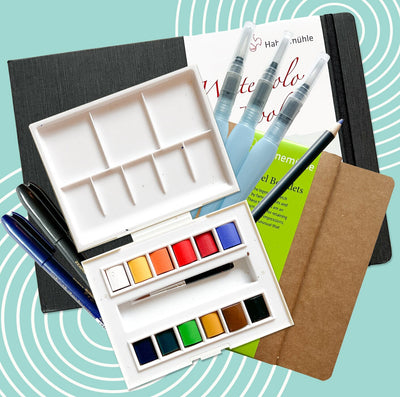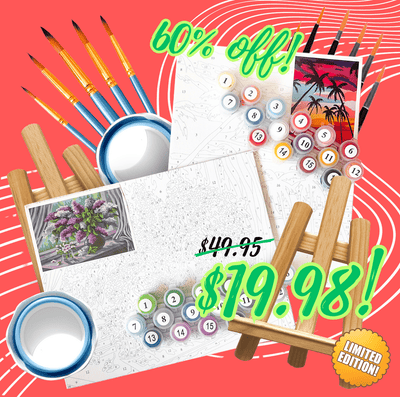In honor of World Suicide Prevention Day, we decided to talk about one of the most famous western painters in modern history, Vincent Van Gogh. Where do you start with someone as influential as this? How do you express that the turbulence of his artwork was also soothing? Because it was.
A dutch painter, born to upper middle class, He was considered a serious, quiet and thoughtful child. -Wikipedia. How many of you reading this are like, ‘Yea me too’? But this last part is important. Gifted often involves sensitivity. This is a man who was for the underdog, so much so that he refused to take the Latin exam, the final step to becoming his dream of an ordained minister, simply because poor people did not speak Latin. It’s obvious he had a deep well of compassion for the suffering, as he knew it so well himself. We also know that his brother Theo was his right hand man, and emotionally and financially supported Vincent. The two of them have hundreds of letters between them, proving their close bond and love for each other. These letters are a big reason we know many intimate details of Van Gogh’s life. It’s been said that in these letters, Van Gogh’s writing style has a sensitivity and intimacy much like that of a diary.

Wheat Fields With Cypresses; Vincent Van Gogh

Sunflowers; Vincent Van Gogh

The Potato Eaters; Vincent Van Gogh
Interestingly enough, Van Gogh didn’t complete his first oil painting until he was 28. And his first large scale piece, The Potato Eaters, didn’t come until he was 33. This painting is another example of his affinity for the poor and suffering.
His identity as an artist was almost completely self created, versus someone like Picasso who was reared since birth to become a great painter by his father, who was also a painter. In his prime Van Gogh moved to Aries, France to paint his most famous works like Wheat Fields With Cypresses and Sunflowers. Born on March 30, Van Gogh was an Aries, coincidence? I think not. During this time he completed over 200 paintings and 100 watercolors and drawings. Wikipedia explains that despite his otherworldly talent and productivity in Aries, He was still viewed as “unsuccessful in his lifetime […] considered a madman and a failure”. He is the prize horse for the misunderstood genius narrative we have come to know so well in our lifetime, the romanticized ideal of the tortured artist. We’ve all heard that Van Gogh cut off his left ear, and while the details of this event are unclear, we do know that the hospital diagnosed the episode as acute mania. It’s said that Van Gogh had no recollection of the event. Police ordered him to an asylum in Aries where he checked in, but unfortunately not much progress was made. Months after this, in May of 1889, he voluntarily admitted himself to the Saint-Rémy-de-Provence asylum in southern France.
Van Gogh didn’t become famous until after his suicide, which was suicide by gunshot at 37 years old. He died on July 27th 1890. And while we have come a long way since then, in the realm of mental health, I think rather than say we should or shouldn’t romanticize his story, there’s actually a third option. What if Van Gogh was a lot like us, and of course we’ll never know, but maybe this highly sensitive person didn’t receive the treatment, environment or support they needed to thrive. What if his all too vivid, turbulent works of art, were also a medicine that brought the chaos of his life into some type of order while he worked. And perhaps this work yielded a peace, certain harmony within him. If that’s true, then his works would represent such a state. A moment of freedom. This is why we say beautiful when we look at an epic piece like Starry Night. If Van Gogh knew about self care, meditation, received the best mental health diagnosis, or been alive today, would he have been more successful and healthy? We will never know. What we do know is that it’s a possibility. If only there was someone there to let him know it would get better, that his paintings were actually the beginning of his treatment, and that they were a key to unlocking his freedom.
A phrase coined by Natalya St. Clair, called turbulent flow, is what she believes allowed Van Gogh to capture a deep mystery of movement, fluid and light in his work. Capturing the movement of light is what separates Van Gogh from his predecessors. Turbulence is defined as “violent or unsteady movement”. This turbulent flow is the hallmark of Van Gogh’s genius, it’s the stamp of his work. It’s what makes you know a Van Gogh painting each and every time you see one. It’s as if you can “hear” the light in his paintings. And while turbulence suggests something unsteady, turbulent flow is quite mathematical, harmonious and pattern driven. It’s all about patterns, rhyme and reason sprouting out of the chaos.
Art as therapy began in the mid 20th century. A common practice in art therapy is the work of the mandala. Mandala literally translates to a symbol in a dream, representing the dreamer's search for completeness and self-unity. Every artist yearns for harmony and wholeness in their work upon completion, as this wholeness in turn satiates the actual person, making them too feel complete. The idea of the mandala in various spiritual traditions is that after some time working on it, you eventually enter a sacred space that leads to meditation. This is what we assume as a possibility for Van Gogh as he painted a masterpiece like Starry Night. Van Gogh was unconsciously, (or consciously), creating his own mandalas, over and over again.
According to CNNhealth, art therapy is not only about learning and improving yourself — it's a means of personal expression, too. Art therapist Marygrace Berberian states that "Coloring definitely has therapeutic potential to reduce anxiety, create focus or bring [about] more mindfulness". CNNhealth goes further to say that “groundbreaking research in 2005 proved anxiety levels dropped when subjects colored mandalas, which are round frames with geometric patterns inside. Simply doodling, though, had no effect in reducing the other subjects' stress levels.”
September’s Smart Art Box arrives with a most appropriate prompt, The Mandala. With a step by step guide to creating your own, it also includes a toned grey sketchbook, Derwent metallic water soluble pencils, Derwent six pack sketching pencils, Derwent academy metallic markers (eight pack), and a Derwent tri tip eraser.
In honor of World Suicide Prevention Day, we hope that through creativity and art, we can offer a small thread in the forever evolving conversation of mental health awareness, while also paying tribute to a creative genius that lived through the peaks and valley’s of mental health. His suicide will forever be an unfortunate part of his narrative, but it also doesn’t define his light, genius and legacy. We hope you’ll share your mandalas with us, and more so, we hope the process leaves you with a little more happiness, a little more peace.
Alicia Blue
Sept 10, 2020

